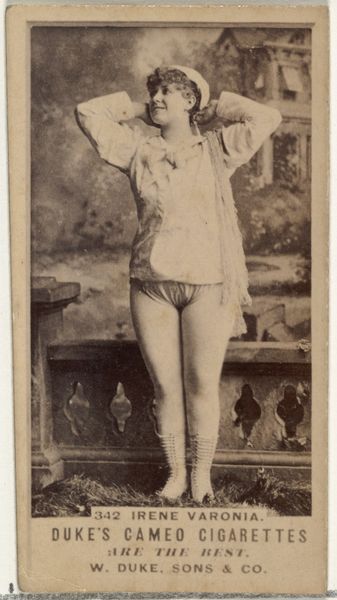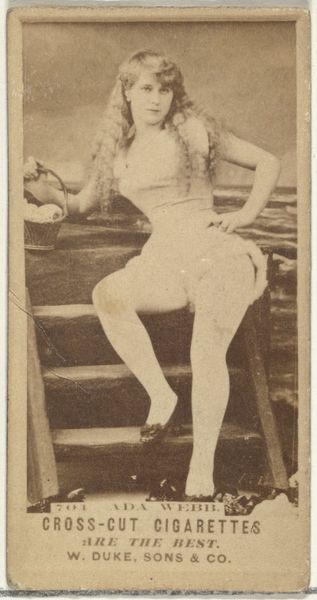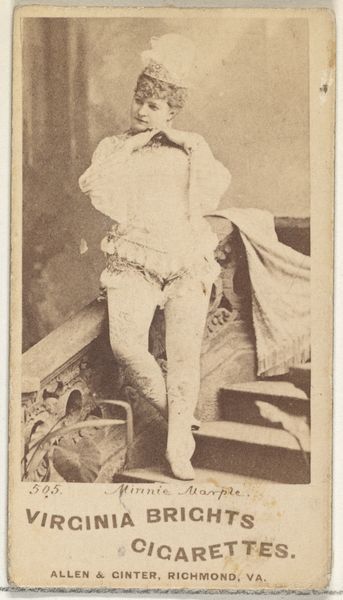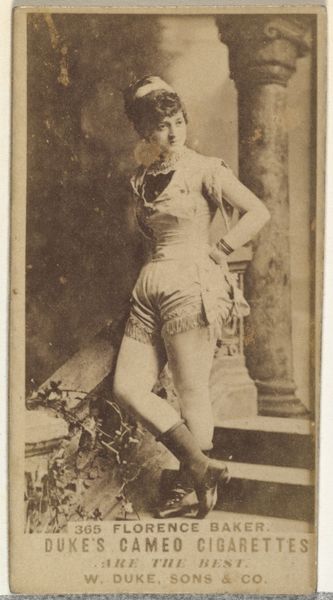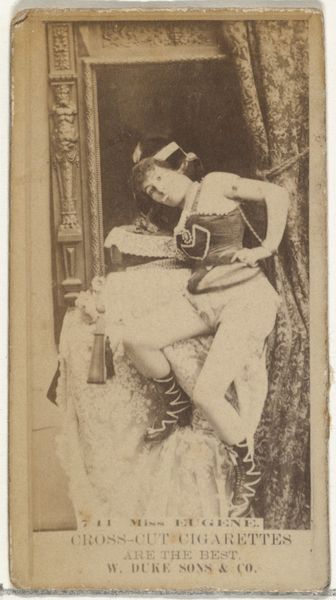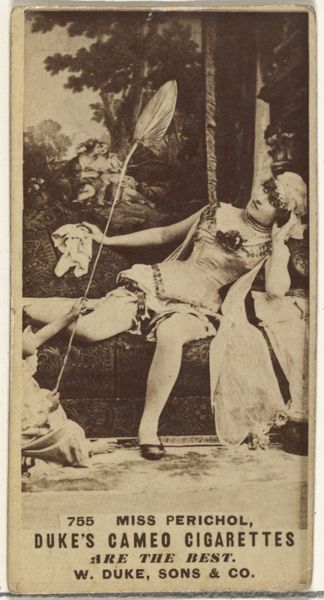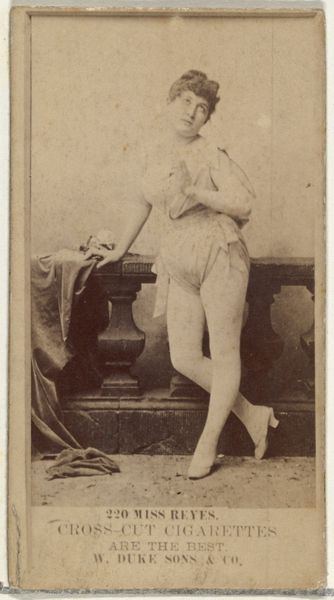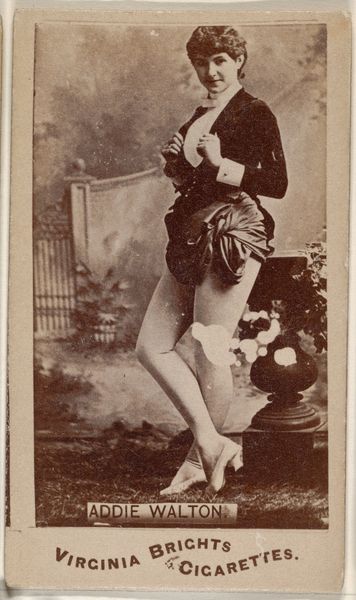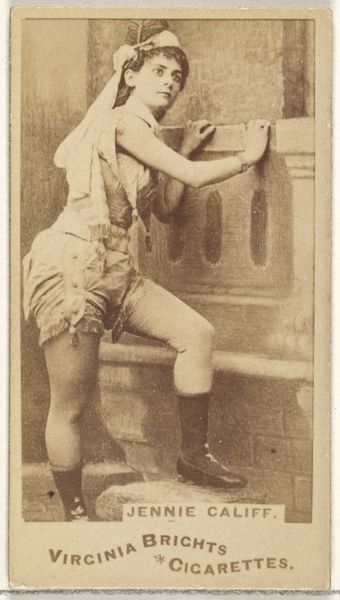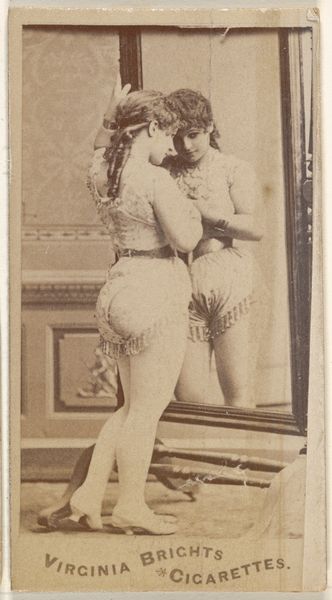
Card Number 609, Laura Burt, from the Actors and Actresses series (N145-3) issued by Duke Sons & Co. to promote Cross Cut Cigarettes 1880s
0:00
0:00
drawing, print, photography
#
portrait
#
drawing
# print
#
figuration
#
photography
#
19th century
#
genre-painting
#
erotic-art
Dimensions: Sheet: 2 11/16 × 1 3/8 in. (6.8 × 3.5 cm)
Copyright: Public Domain
Editor: So, here we have "Card Number 609, Laura Burt," from the 1880s. It’s a cigarette card, actually, promoting Cross Cut Cigarettes by Duke Sons & Co. The image itself is a photograph turned into a print of an actress dressed as, perhaps, Cupid. What strikes me is the contrast between this theatrical pose and its use as advertising. What do you make of this, in terms of its history and purpose? Curator: Well, these cards reveal a fascinating intersection of entertainment, consumer culture, and the construction of celebrity in the late 19th century. The image of Laura Burt, likely a well-known stage actress of her time, isn’t just selling cigarettes; it's selling a lifestyle, a connection to beauty and artistry. Editor: So the aim was really that explicit? To sell the idea of lifestyle and aspirations? Curator: Absolutely. Think about it: the rise of mass media, advertising, and photography meant that companies had new avenues to reach the public. What better way than to capitalize on the popularity of actresses like Laura Burt, who represented a certain ideal of beauty and success? How might the commodification of an actress's image play into gender roles of the era? Editor: That's a good point. Using women to sell goods by using images and ideas related to love or attraction. That gives me a whole new insight into how things were marketed. I guess even today it's pretty similar. Curator: Indeed. This card functions as a microcosm of broader societal trends regarding the representation of women, celebrity culture, and the rise of consumerism. It reminds us that even seemingly simple artifacts can be powerful cultural documents.
Comments
No comments
Be the first to comment and join the conversation on the ultimate creative platform.
